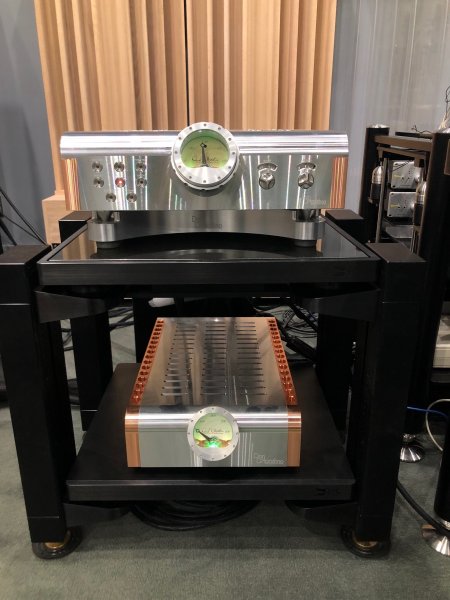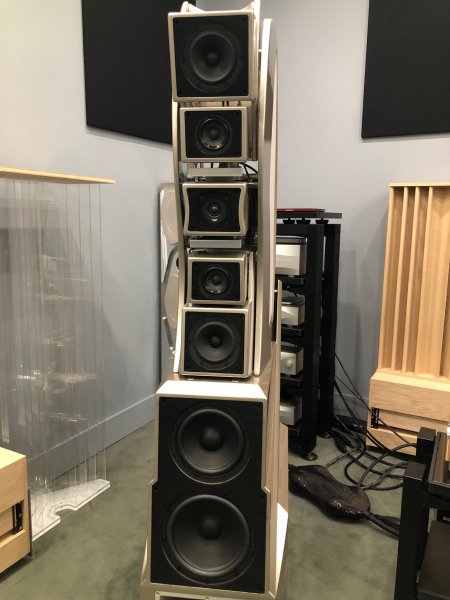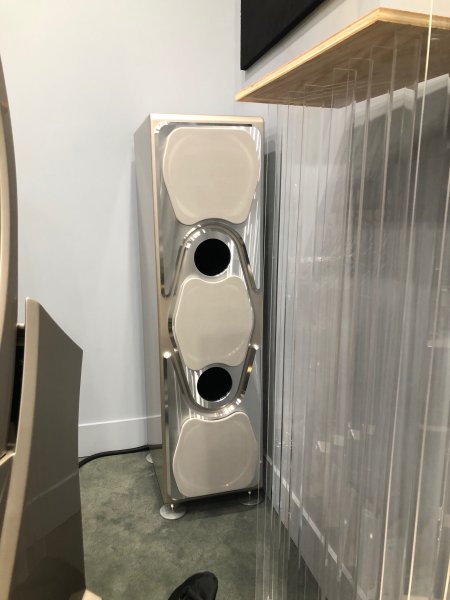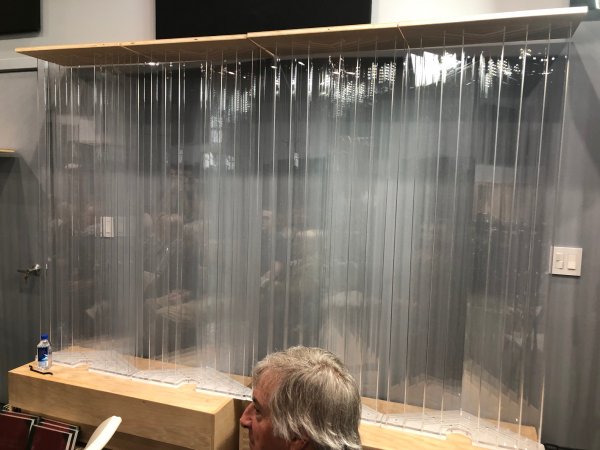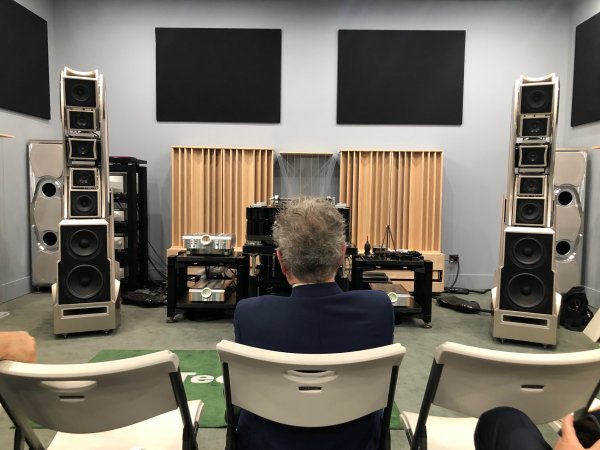I attended last night the invitation-only North American public debut of the TechDAS Air Force Zero turntable (about $400,000) and the Wilson Audio Master Chronosonic and Master Subsonic loudspeaker system (about $800,000).
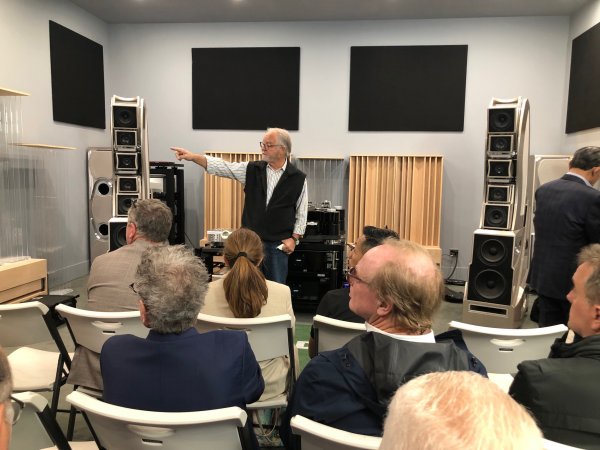
Maier Shadi, the well-known and widely-respected proprietor of The Audio Salon, in Santa Monica, California, who hosted the event, was introduced by Peter McGrath of Wilson Audio. Maier did an amazing job of converting in only a couple of weeks a large storage room into a great-sounding high-end listening room. I noticed the liberal use of sound absorbers on the ceiling and on the upper sections of the walls, and a large number of SMT Varitunes and SMT diffusers covering the front wall and the side walls.
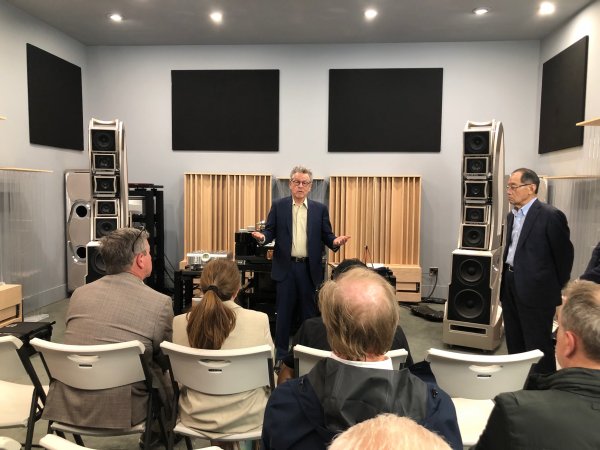
Michael Fremer brought his own records and took responsibility for spinning vinyl.
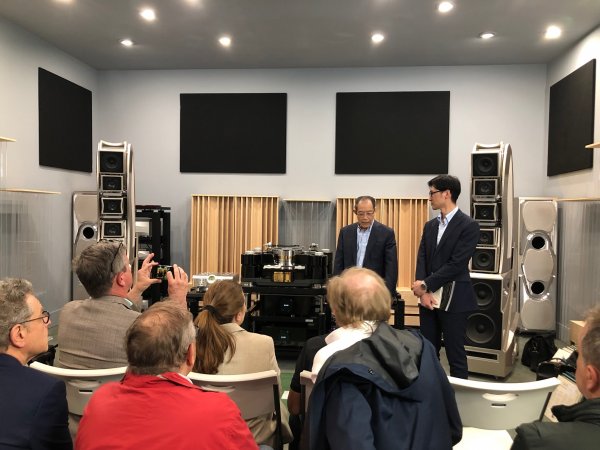
Nishikawa-san and Motofumi-san of TechDAS discussed the new Air Force Zero turntable, the culmination of Nishikawa-san’s life’s work designing and building turntables. Nishikawa-san explained that the Air Force Zero platter consists of five sub-platters totaling 120kg in weight. The Artesiana stand weighs 320kg. The floating bases total 100kg.
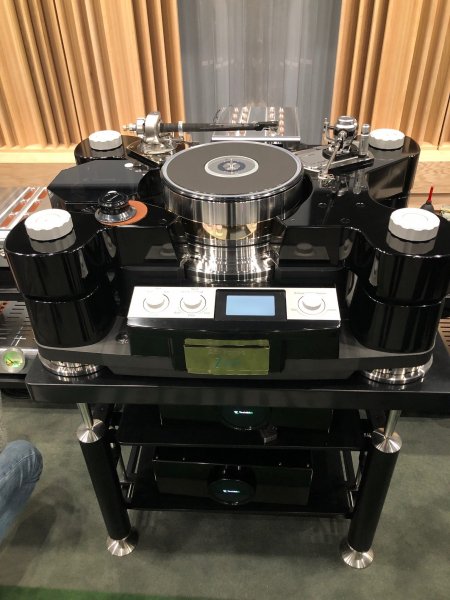
This is the metallurgy of the sub-platters from top to bottom:
Air is sucked through all five platters to achieve vacuum hold-down of records. There is no airspace anywhere in the five platters.
The motor, a 3 phase 12 pole vintage Pabst synchronous motor, itself has an air suspension. A motor drive controller determines the speed of rotation of the platter and the phase of the motor.
Nishikawa demonstrated how with the vacuum hold-down off if you tap a vinyl record on the platter, you hear the tapping through the speakers. With the vacuum on the same tapping of the record produces no noise whatsoever through the speakers.
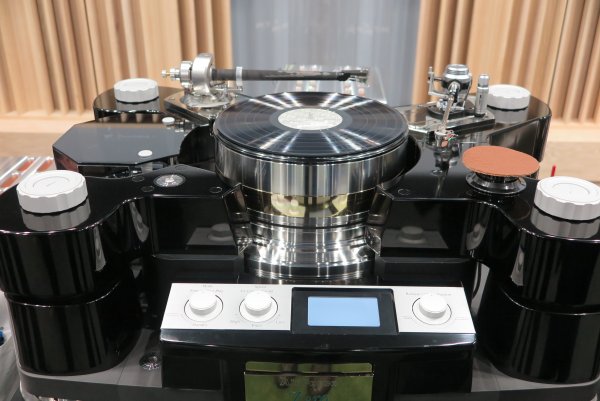
The Air Force Zero was outfitted with a SAT CF12 tonearm and a 12” Graham Phantom Elite with a titanium arm-wand. On the CF12 tonearm rode a “barely broken in Atlas SL” cartridge. A TechDAS cartridge was mounted on the Graham tonearm. There was no SME 3012R mounted on this Air Force Zero, as has been seen in some photos of the turntable.

Maier Shadi, the well-known and widely-respected proprietor of The Audio Salon, in Santa Monica, California, who hosted the event, was introduced by Peter McGrath of Wilson Audio. Maier did an amazing job of converting in only a couple of weeks a large storage room into a great-sounding high-end listening room. I noticed the liberal use of sound absorbers on the ceiling and on the upper sections of the walls, and a large number of SMT Varitunes and SMT diffusers covering the front wall and the side walls.

Michael Fremer brought his own records and took responsibility for spinning vinyl.

Nishikawa-san and Motofumi-san of TechDAS discussed the new Air Force Zero turntable, the culmination of Nishikawa-san’s life’s work designing and building turntables. Nishikawa-san explained that the Air Force Zero platter consists of five sub-platters totaling 120kg in weight. The Artesiana stand weighs 320kg. The floating bases total 100kg.

This is the metallurgy of the sub-platters from top to bottom:
1) tungsten or titanium top platter
2) stainless steel platter
3) gun metal platter
4) stainless steel platter
5) stainless steel bottom platter.
Air is sucked through all five platters to achieve vacuum hold-down of records. There is no airspace anywhere in the five platters.
The motor, a 3 phase 12 pole vintage Pabst synchronous motor, itself has an air suspension. A motor drive controller determines the speed of rotation of the platter and the phase of the motor.
Nishikawa demonstrated how with the vacuum hold-down off if you tap a vinyl record on the platter, you hear the tapping through the speakers. With the vacuum on the same tapping of the record produces no noise whatsoever through the speakers.

The Air Force Zero was outfitted with a SAT CF12 tonearm and a 12” Graham Phantom Elite with a titanium arm-wand. On the CF12 tonearm rode a “barely broken in Atlas SL” cartridge. A TechDAS cartridge was mounted on the Graham tonearm. There was no SME 3012R mounted on this Air Force Zero, as has been seen in some photos of the turntable.


